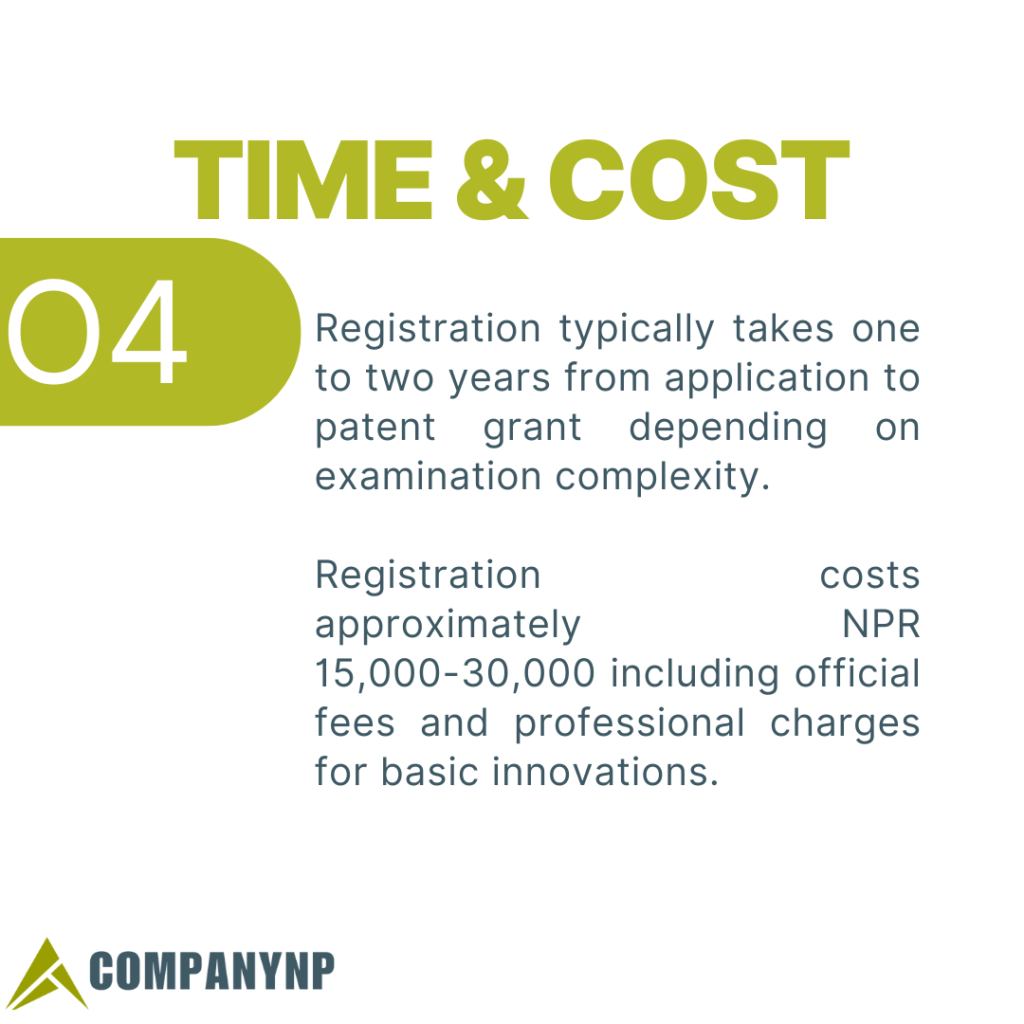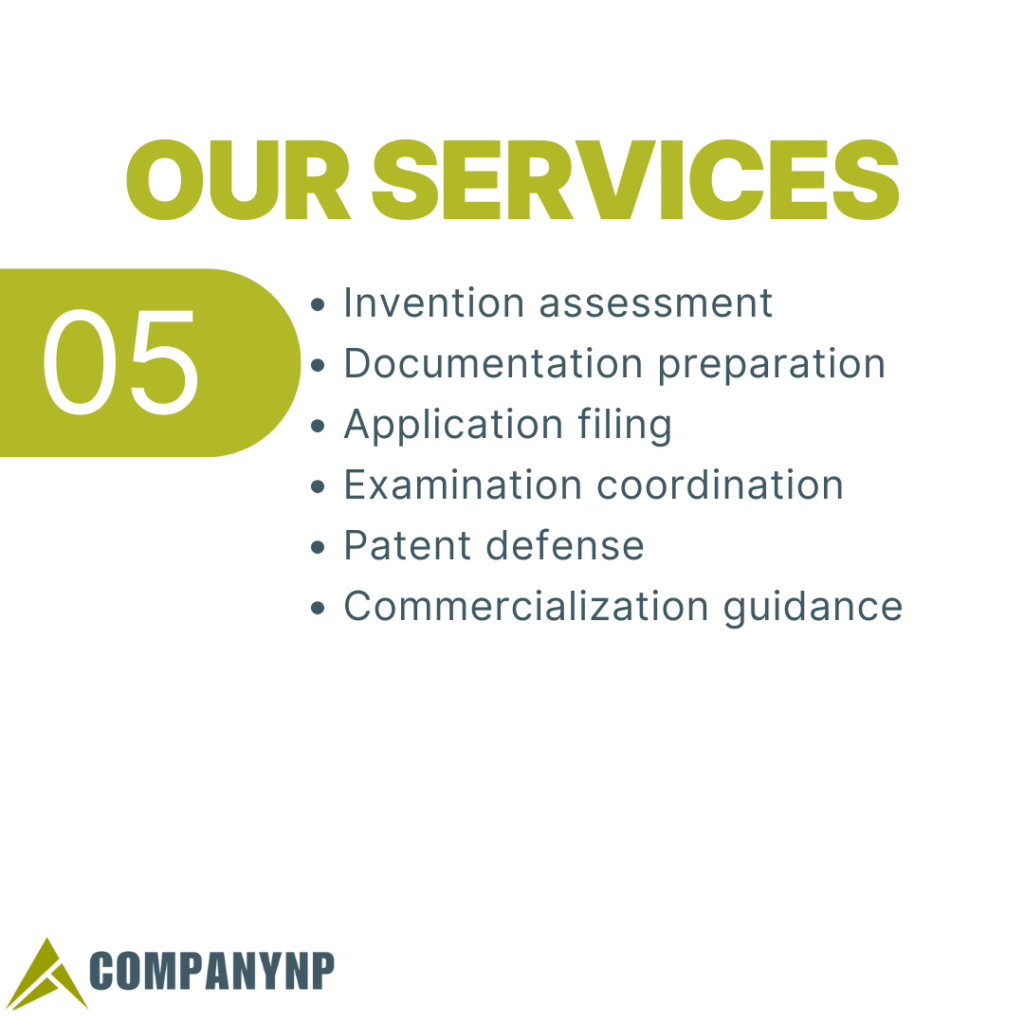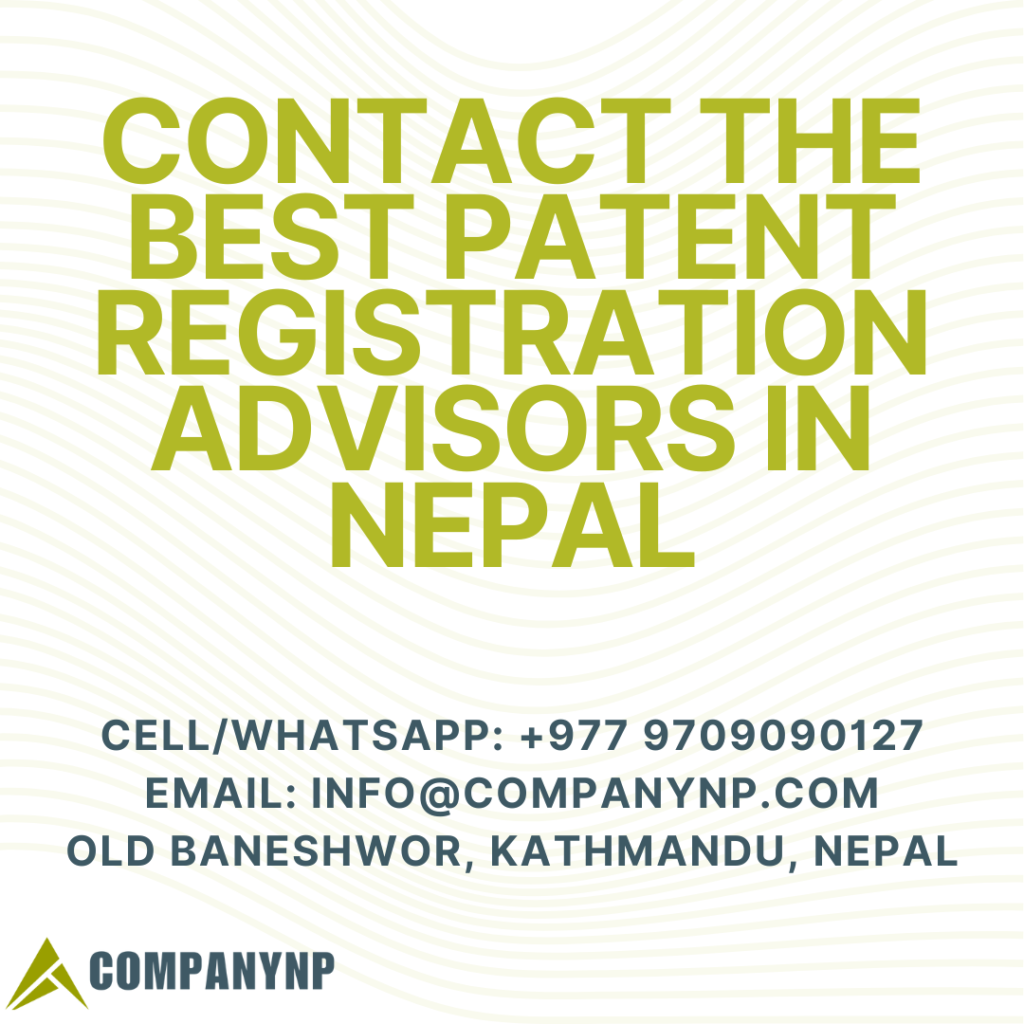What is Patent Registration in Nepal?
Patent registration in Nepal is a legal process that grants exclusive rights to inventors for their new and innovative creations. This protection allows inventors to prevent others from making, using, or selling their invention without permission for a specific period. In Nepal, patents are crucial for fostering innovation and protecting intellectual property rights.
The patent system in Nepal aims to:
- Encourage technological advancement
- Promote economic growth
- Protect inventors’ rights
- Facilitate knowledge sharing
By registering a patent, inventors can secure their ideas and potentially profit from their innovations. This process is essential for both individual inventors and businesses looking to safeguard their intellectual property in the Nepalese market.
Where to Register a Patent in Nepal?
In Nepal, the primary authority responsible for patent registration is the Department of Industry (DOI). This government body oversees the entire process of patent application, examination, and registration. The DOI is located in Kathmandu, the capital city of Nepal.
To register a patent, inventors or their representatives must submit their applications to:
Department of Industry Tripureshwor, Kathmandu Nepal
The DOI provides guidance and support throughout the registration process. They offer:
- Application forms
- Information on required documents
- Assistance with queries
- Updates on application status
It’s advisable to visit the DOI’s official website or contact them directly for the most up-to-date information on patent registration procedures and requirements.
What Laws Govern Patent Registration in Nepal?
Patent registration in Nepal is primarily governed by the Patent, Design and Trademark Act, 2022 (1965). This act provides the legal framework for protecting intellectual property rights, including patents, in the country. Key aspects of this law include:
- Definition of patentable inventions
- Rights granted to patent holders
- Duration of patent protection
- Procedures for patent application and registration
- Enforcement of patent rights
- Penalties for infringement
Other relevant laws and regulations that impact patent registration include:
- The Industrial Property Act
- Various international treaties and agreements Nepal has signed
It’s important to note that Nepal’s patent laws are subject to updates and amendments. Inventors and businesses should consult with legal experts or the Department of Industry for the most current legal information regarding patent registration.
Read More:
Dividend Distribution Process in Nepal
Company Location Change Process in Nepal
Import Export Company Registration in Nepal
What is the Process for Patent Registration?
The patent registration process in Nepal involves several steps. Here’s a detailed breakdown of the procedure:
- Invention Assessment: Before starting the registration process, assess your invention to ensure it meets the criteria for patentability. It should be novel, non-obvious, and have industrial applicability.
- Patent Search: Conduct a thorough patent search to ensure your invention hasn’t already been patented. This can be done through the Department of Industry’s database or with the help of a patent attorney.
- Prepare Application: Draft a detailed patent application, including a complete description of the invention, drawings or diagrams, and claims defining the scope of protection sought.
- Submit Application: File the patent application with the Department of Industry. This includes submitting the required forms, documents, and paying the initial fees.
- Formal Examination: The DOI will conduct a formal examination of your application to ensure all necessary documents are present and correctly filled out.
- Substantive Examination: If the formal examination is passed, the application undergoes a substantive examination to assess the invention’s patentability.
- Publication: If the application passes the substantive examination, it is published in the Industrial Property Bulletin for public review.
- Opposition Period: There’s a period during which third parties can oppose the patent grant if they believe the invention doesn’t meet patentability criteria.
- Grant of Patent: If no successful oppositions are filed, and all requirements are met, the patent is granted.
- Registration: The patent is officially registered, and a certificate is issued to the inventor.
This process typically takes several months to a few years, depending on the complexity of the invention and the workload of the Department of Industry.
What Documents are Required for Patent Registration?
To successfully register a patent in Nepal, applicants must submit a comprehensive set of documents. The Department of Industry requires the following:
- Patent Application Form: A completed official application form provided by the DOI.
- Detailed Specification: A thorough description of the invention, including its purpose, construction, and operation.
- Drawings or Diagrams: Clear, detailed illustrations of the invention, if applicable.
- Claims: A precise definition of the scope of protection sought for the invention.
- Abstract: A brief summary of the invention’s key features.
- Power of Attorney: If filing through a representative or agent.
- Priority Documents: If claiming priority based on an earlier filing in another country.
Additional documents that may be required include:
- Proof of inventor’s identity
- Assignment deed (if the applicant is not the inventor)
- Translated documents (if originals are not in Nepali or English)
It’s crucial to ensure all documents are accurate, complete, and submitted in the required format to avoid delays in the registration process.
How Long Does Patent Registration Take in Nepal?
The duration of the patent registration process in Nepal can vary significantly depending on several factors. On average, it takes between 18 to 36 months from the date of filing to the grant of a patent. However, this timeline can be influenced by:
- Complexity of the invention
- Workload of the Department of Industry
- Completeness and clarity of the application
- Any objections or oppositions filed
Key stages and their approximate durations:
- Initial filing to formal examination: 2-4 months
- Substantive examination: 6-18 months
- Publication and opposition period: 3-6 months
- Final processing and grant: 2-4 months
It’s important to note that these are general estimates. Some applications may be processed more quickly, while others might take longer. Applicants can often expedite the process by:
- Ensuring all documents are complete and accurate
- Responding promptly to any queries from the DOI
- Considering expedited examination options, if available
Regular follow-ups with the Department of Industry can help track the progress of your application and address any issues promptly.
What are the Costs of Patent Registration?
The costs associated with patent registration in Nepal can be divided into official fees and professional fees. Here’s a breakdown of the main expenses:
Official Fees:
- Application filing fee
- Examination fee
- Publication fee
- Grant fee
- Renewal fees (paid annually after grant)
Professional Fees:
- Patent attorney or agent fees
- Drafting and preparation costs
- Translation fees (if required)
Additional costs may include:
- Fees for requesting expedited examination
- Costs for responding to office actions
- Fees for filing amendments or corrections
It’s important to note that fees can vary based on the type of applicant (individual, small entity, or large corporation) and the complexity of the invention. While exact figures are subject to change, applicants should budget for several thousand Nepalese Rupees for the entire process.
To get the most accurate and up-to-date fee information, it’s advisable to:
- Check the Department of Industry’s official website
- Consult with a local patent attorney
- Contact the DOI directly for a current fee schedule
Remember, while patent registration involves significant costs, it’s an investment in protecting valuable intellectual property rights.
What are Post-Registration Requirements for Patents?
After successfully registering a patent in Nepal, patent holders must fulfill certain obligations to maintain their rights. These post-registration requirements include:
- Annual Renewal Fees: Pay yearly fees to keep the patent in force. Failure to pay can result in the patent lapsing.
- Working the Invention: Demonstrate that the patented invention is being used or “worked” in Nepal within a specified period.
- Marking Products: Properly mark patented products with the patent number to notify the public of patent protection.
- Monitoring Infringement: Actively watch for potential infringements of the patent rights.
- Maintaining Records: Keep detailed records of the invention’s use, licensing agreements, and any improvements made.
- Updating Information: Inform the Department of Industry of any changes in ownership or contact details.
- Considering Commercialization: Explore options for commercializing the invention through licensing or manufacturing.
Patent holders should also stay informed about any changes in patent laws or regulations that may affect their rights. Regular consultation with a patent attorney can help ensure compliance with all post-registration requirements.
What Types of Inventions Can Be Patented?
In Nepal, a wide range of inventions can be patented, provided they meet the criteria of novelty, non-obviousness, and industrial applicability. Patentable inventions generally fall into these categories:
- Products: New and innovative physical objects or devices.
- Processes: Novel methods or techniques for doing something.
- Machines: New mechanical devices or apparatus.
- Compositions of Matter: New chemical compounds, mixtures, or substances.
- Improvements: Significant enhancements to existing products or processes.
Examples of patentable inventions include:
- New pharmaceutical compounds
- Innovative agricultural tools
- Improved manufacturing processes
- Novel software applications (in some cases)
- Unique electronic devices
However, certain types of inventions are typically not patentable in Nepal:
- Natural phenomena or laws of nature
- Abstract ideas or mathematical formulas
- Methods of doing business
- Artistic works (these are covered by copyright)
It’s important to consult with a patent expert or the Department of Industry to determine if your specific invention qualifies for patent protection in Nepal.
What are the Benefits of Patent Registration?
Patent registration in Nepal offers numerous advantages to inventors and businesses. Understanding these benefits can help you make an informed decision about protecting your intellectual property:
- Exclusive Rights: Gain the exclusive right to make, use, and sell your invention in Nepal for a specified period.
- Market Advantage: Prevent competitors from copying your invention, giving you a significant edge in the market.
- Licensing Opportunities: Generate revenue by licensing your patented invention to others.
- Increased Company Value: Patents can significantly boost your company’s valuation, attracting investors and partners.
- Legal Protection: Obtain legal recourse against infringers who use your invention without permission.
- Recognition: Gain recognition as an innovator in your field, enhancing your professional reputation.
- Knowledge Sharing: Contribute to technological advancement by publicly disclosing your invention.
Additional benefits include:
- Potential tax benefits for income derived from patented inventions
- Ability to use patents as collateral for loans
- Enhanced credibility when seeking funding or partnerships
By securing patent protection, inventors and businesses can safeguard their innovations, potentially leading to significant financial and strategic advantages in the Nepalese market and beyond.
Contents
- 1 What is Patent Registration in Nepal?
- 2 Where to Register a Patent in Nepal?
- 3 What Laws Govern Patent Registration in Nepal?
- 4 What is the Process for Patent Registration?
- 5 What Documents are Required for Patent Registration?
- 6 How Long Does Patent Registration Take in Nepal?
- 7 What are the Costs of Patent Registration?
- 8 What are Post-Registration Requirements for Patents?
- 9 What Types of Inventions Can Be Patented?
- 10 What are the Benefits of Patent Registration?








